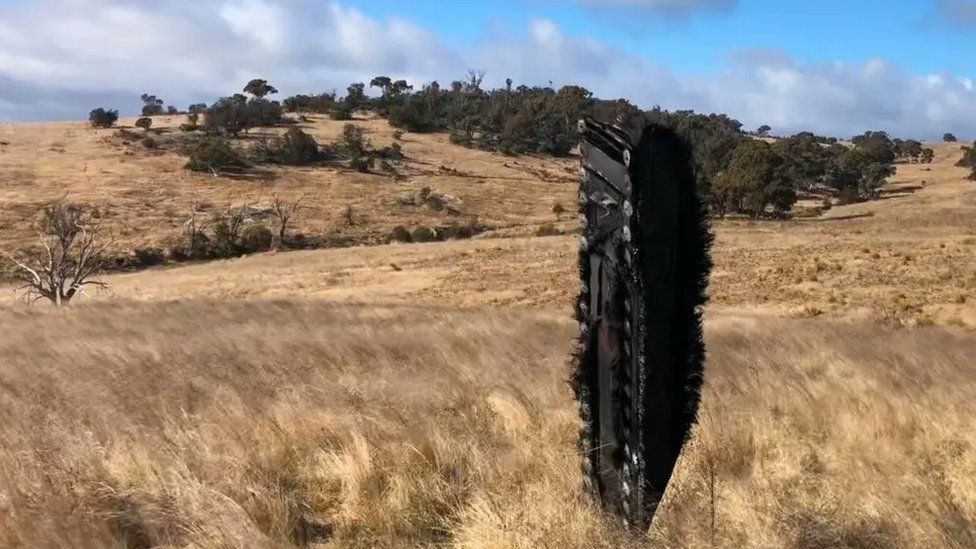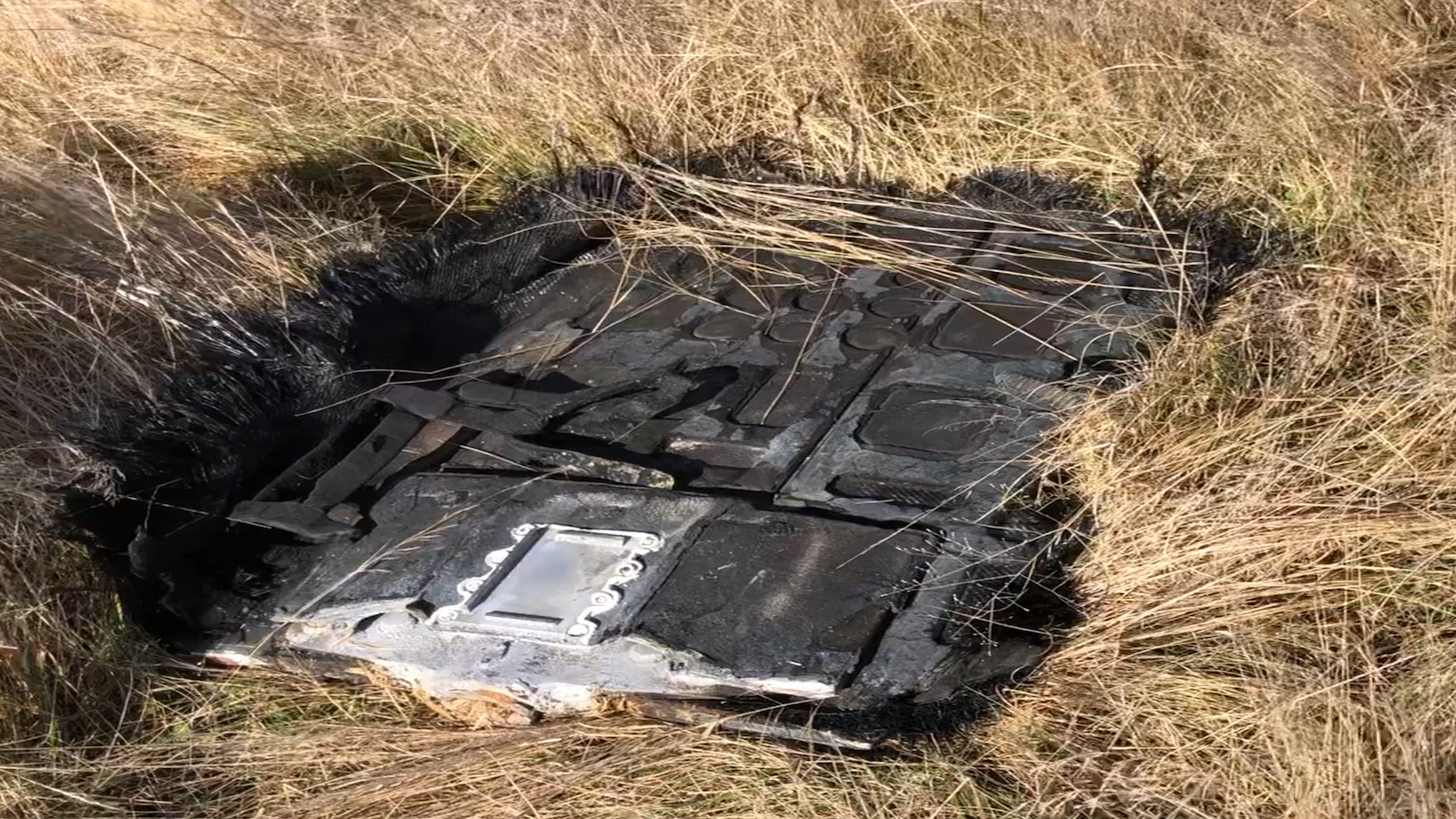SpaceX space junk crash lands in Australian sheep farm
Thankfully no one was harmed

Three large chunks of space debris that crash-landed into Australian sheep farms have been confirmed as belonging to SpaceX, the Australian Space Agency announced today (Aug 3).
The space junk, found embedded in farmlands in New South Wales' Snowy Mountains region on Saturday (July 30), came from a part of a SpaceX Crew Dragon spacecraft that likely reentered the Earth's atmosphere on July 9 — the day that locals reported hearing a loud sonic boom and seeing a blazing light arc across the sky.
The first of the debris, a 10-foot-tall (3 meters) spike seared black by reentry, was found by local sheep farmer Mick Miners on his farm south of Jindabyne, according to the Australian Broadcasting Corporation News. Then his neighbor, Jock Wallace, discovered a separate chunk nearby. Wallace promptly asked Australia's Civil Aviation Safety Authority (CASA) what he should do with the space shrapnel. It told them to contact NASA.
Related: A 25-ton Chinese rocket booster will crash to Earth Saturday. What's the risk?
"I'm a farmer from Dalgety, what am I going to say to NASA?" Wallace told Australian Broadcasting Corporation News.
The Crew Dragon capsule launched in November 2020 to take four NASA astronauts on a round trip to the International Space Station (ISS). Experts believe that the space junk is likely from the unpressurized trunk of the Crew Dragon, which was attached to the spacecraft's lowest side and was designed to carry cargo into space and to support the craft during its launch, according to SpaceX.
Half of the trunk was also stocked with solar panels that powered the ship during flight and while it was docked at the ISS. The trunk was intentionally jettisoned upon reentry to make the Crew Dragon's return to Earth easier, but engineers planned for it to hit the ocean, not a farm.
Get the world’s most fascinating discoveries delivered straight to your inbox.
"I think it's a concern it's just fallen out of the sky. If it landed on your house it would make a hell of a mess," Wallace said.

The debris is the largest recorded piece of space junk to land in Australia since the 77-ton (69 metric tons) Skylab (the United States' very first space station) tumbled from orbit in 1979 thanks to the added drag force solar storms had given to the Earth's atmosphere, scattering wreckage over western Australia.
According to Article VII of the 1967 Outer Space Treaty, of which all the major spacefaring nations are parties, any country that sends an object into space is internationally liable for the damage it may cause to another party when it comes crashing back to Earth. Such incidents are either processed in a claims commission or handled through diplomatic channels. For instance, in 1978, when the malfunctioning Soviet satellite Kosmos 954 crashed into western Canada, spraying a roughly 370-mile-long (600 kilometers) path with debris from its broken onboard nuclear reactor, for which the USSR paid Canada three million Canadian dollars in compensation
The SpaceX rocket wasn't the only one to fall to Earth last weekend; a 25-ton (23 metric tons) core stage of one of China's Long March 5B booster also fell over Malaysia and Indonesia, sprinkling metallic debris over villages, according to Space.com.
Space agencies usually plan the trajectories of rockets so that any potential debris burns up in the atmosphere or lands in the ocean, but the increasing pace of space activity has put more of Earth's population at risk of being struck by debris from uncontrolled reentries. In fact, researchers writing in a July 11 paper published in the journal Nature Astronomy estimate that there is a 10% chance of a human death from falling rocket junk over the next decade; and that, over the last 30 years, as much as 70% of all rocket bodies had fallen to the Earth in uncontrolled reentries.
Originally published on Live Science.

Ben Turner is a U.K. based writer and editor at Live Science. He covers physics and astronomy, tech and climate change. He graduated from University College London with a degree in particle physics before training as a journalist. When he's not writing, Ben enjoys reading literature, playing the guitar and embarrassing himself with chess.
 Live Science Plus
Live Science Plus





